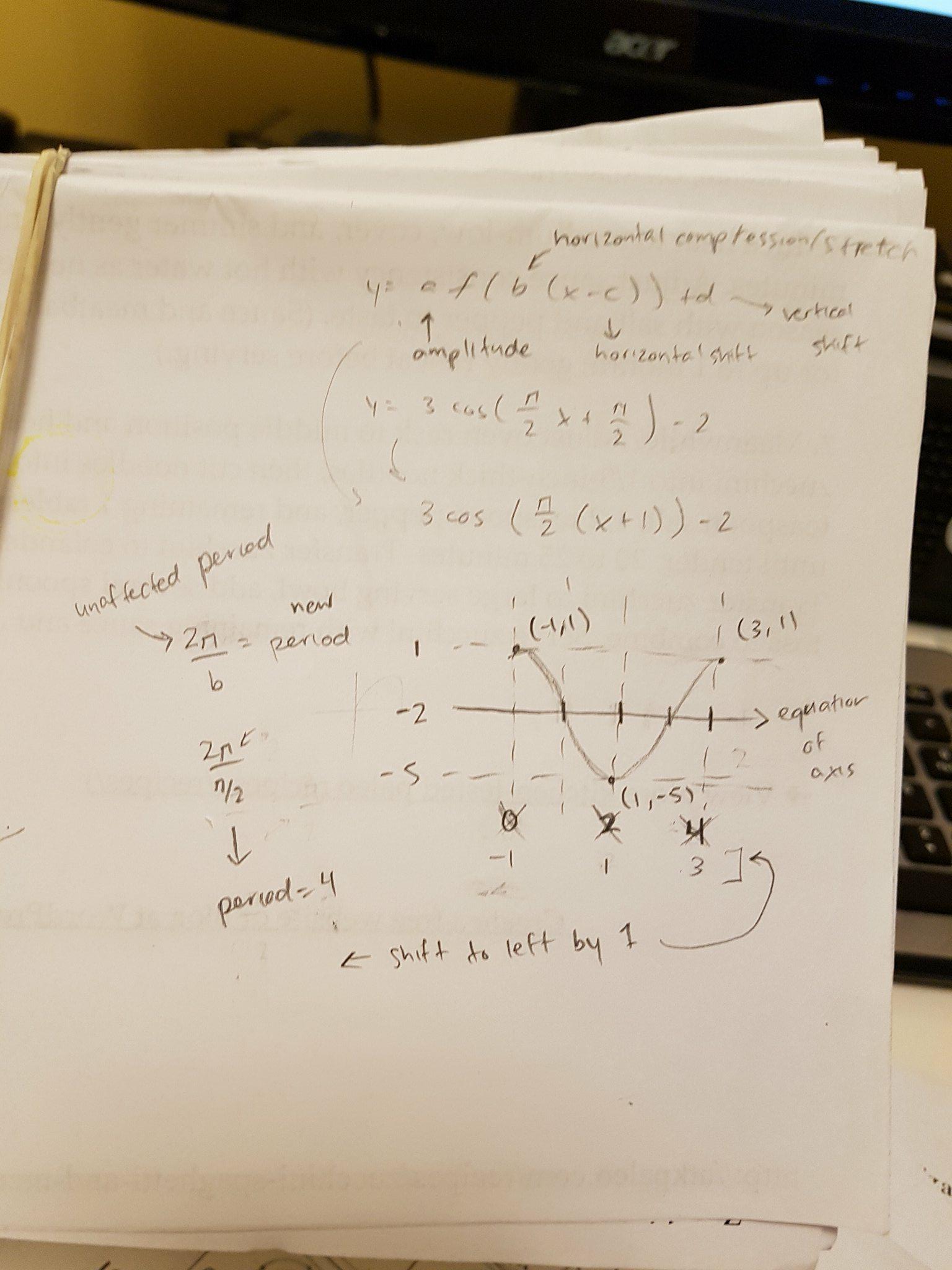How do you find the period, amplitude and sketch #y=3cos((pix)/2+pi/2)-2#?
1 Answer
Sorry I'm not a committed teacher, (just using this site for my own question). You want to first understand the properties of the standard equation for a sinusoidal function (for cosine, and sine).
Explanation:
I'm not sure how much you know, but I'll try to briefly explain things. It's midnight for me, lol:
So right off the bat, you have your amplitude: 3.
Next I would suggest creating a rough sketch using the
Using your amplitude, this is how much you will add (for the peak) and subtract (for the valley) to the equation of axis.
Then you need to factor out a
To find the period, since we're in radians, you would take
Then based on the
Once again this is a rough answer, hopefully someone better will come along to help you. Here is rough work though:


